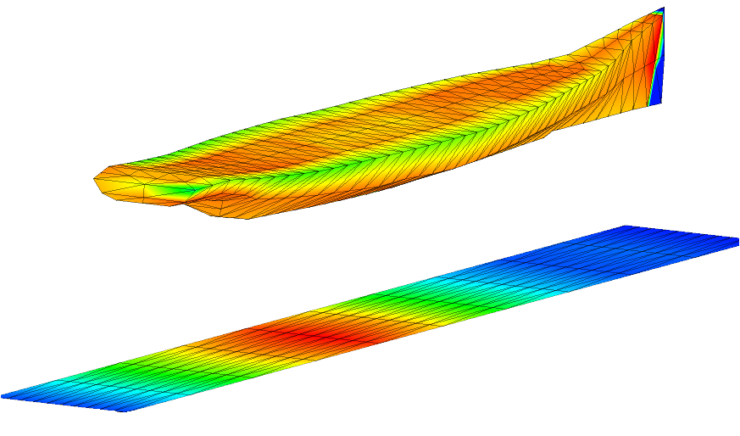Why Repeat?
Last year on the occasion of Navy Day I had published an article titled “What’s Your Signature” (https://www.raksha-anirveda.com/whats-your-signature/) where we discussed mostly about the RADAR signature or RCS. Though we did a fleeting mention of others, today we discuss them in detail. Unfortunately, when we talk about naval vessels we talk about radar and acoustic signature. Much discussion does not happen on others. Focus of today’s article is the Infrared signature and extremely low frequency electromagnetics (ELFE) or the signature that is caused due to corrosion. The aim of this article is to expand the parlance when we talk about naval vessels that are categorized as ‘float’, ‘move’ and ‘fight’. I wish we could add the fourth term to this mix ‘Communicate and Evade’. Both are important but communication is out of purview of this article. In passing we will also talk about visibility of ship from patrol aircraft or satellites and few issues relating them.
Infrared (IR)
This is not a research paper so for brevity we will just assume that IR signature is proportional to temperature. In reality IR signature is dependent on various factors like shape and size of the object, emissivity of the object, reflections due to sunshine, background temperature and of course the sensor effectiveness. What I failed to emphasize in the last year’s article was that most of the older weapon systems have been heat seeking. So, management of temperature is very important.
Simulators for IR
As we are seeing the IR signature is a lot dependent on the atmospheric conditions and the place where you are in. Also, the sensor that is measuring the signature is far away from the object it is looking at. This means that the signature it is seeing is already attenuated due to atmosphere and the incident angle at which it is ‘seeing’ the IR emitting object. This necessitates the development of what is called as a “Scene Simulator”. This takes into account the geometries, surroundings, weather conditions and is able to back calculate the signature if we were to see it from source.
Now it is possible (not easy) to calculate how we are ‘seen’ from various angles by various threats. Image below taken from a Bo Yang et al published in ICMEIT 2017 gives scene simulation when the tank is continually firing. Images shown are with and without noise.


The calculation of signatures leads to many innovations for offence and defence. For ships we can design IR suppression systems for the engine exhaust, find which directions we are more vulnerable, reduce signatures on an average etc. For the offense it gives us capability to design IR sensors. We find that researchers are training AI algorithms to identify the enemy vessel based on the signature. This will mean a huge advantage in the kill probability.
ELFE Signature
One more signature that often gets ignored is the ELFE signature (signature due to corrosion). This happens due to current flow generated between the cathodic protection system and propeller shaft. The signature is low but is enough to be detected by mines which can then automatically detonate. This signature can be estimated using similar principles to the estimation of radar cross section. The mathematical equations governing the ELFE i.e., Maxwells equations remain the same. So, development of one technology RCS will feed to the development of ELFE technology.
To mitigate the effects of ELFE, active shaft grounding (ASG) or propeller shaft earthing system (PSES) is carried out. Those math models can also be developed. Without even touching the ship, using the digital twin, we can understand the signature and its mitigation strategies.

Efforts Worldwide?
Worldwide many technologies are being developed and they are very advanced. There are few niche companies in the area of signature prediction, scene simulation and those are all working for their own countries. Usually, these technologies, software and sometimes even the mathematical formulations are confidential.
NATO has its standard IR simulation software that is used by a very few customers worldwide, which means it is a niche application. It also means NATO partners continuously funded this special purpose technology for development and maintenance. What parts of these technologies are allowed for export and what regulations govern the use of the software, the author does not know. Similar technologies have been used for ELFE simulations.
Where are We?
We are not far behind, what we lack is a concerted effort. We have capabilities of design with imported software and technology. But this is too sensitive an area to be left on the mercy of FOEMs. Anyways, the kind of license fee that is asked for by these FOEMs is enough the fund the indigenous development. So, in the money that we give to foreign companies for just buying a license, we can develop our own IP and that can be maintained in India as per our needs. And to add, what we developed for Navy is also usable for air force and army. The IP is very reusable. We will need a national program for signature management that will be married to detection and identification artificial intelligence. We are soon going to miss the bus, we need the program now!
PS: This by no means is a research paper, so no equations and generic statements. Those can be explained separately.
-The writer is Vice President, Strategic Partnerships, Zeus Numerix, a Pune-based defence and space solutions providing company.The views expressed are personal and do not necessarily reflect the views of Raksha Anirveda








